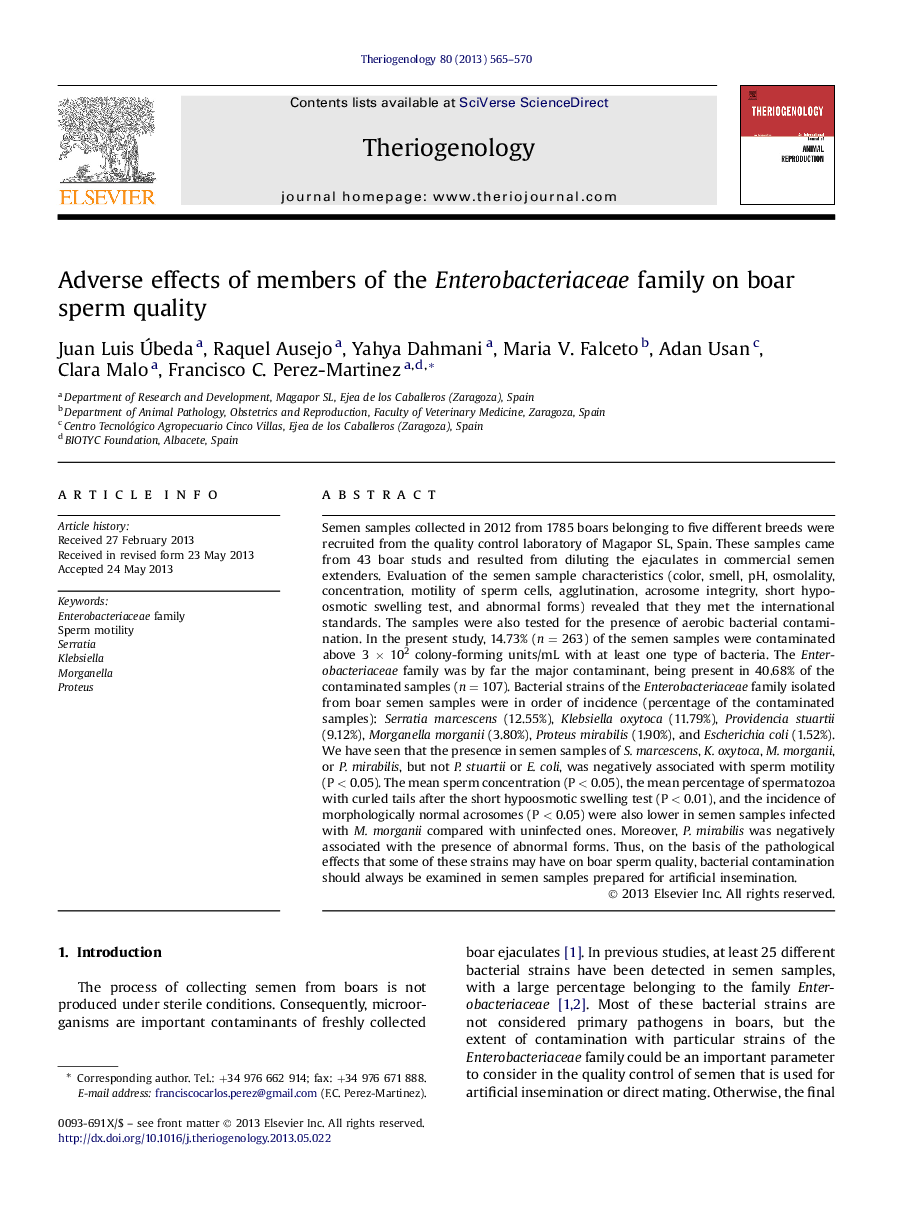| Article ID | Journal | Published Year | Pages | File Type |
|---|---|---|---|---|
| 10892290 | Theriogenology | 2013 | 6 Pages |
Abstract
Semen samples collected in 2012 from 1785 boars belonging to five different breeds were recruited from the quality control laboratory of Magapor SL, Spain. These samples came from 43 boar studs and resulted from diluting the ejaculates in commercial semen extenders. Evaluation of the semen sample characteristics (color, smell, pH, osmolality, concentration, motility of sperm cells, agglutination, acrosome integrity, short hypoosmotic swelling test, and abnormal forms) revealed that they met the international standards. The samples were also tested for the presence of aerobic bacterial contamination. In the present study, 14.73% (n = 263) of the semen samples were contaminated above 3 Ã 102 colony-forming units/mL with at least one type of bacteria. The Enterobacteriaceae family was by far the major contaminant, being present in 40.68% of the contaminated samples (n = 107). Bacterial strains of the Enterobacteriaceae family isolated from boar semen samples were in order of incidence (percentage of the contaminated samples): Serratia marcescens (12.55%), Klebsiella oxytoca (11.79%), Providencia stuartii (9.12%), Morganella morganii (3.80%), Proteus mirabilis (1.90%), and Escherichia coli (1.52%). We have seen that the presence in semen samples of S. marcescens, K. oxytoca, M. morganii, or P. mirabilis, but not P. stuartii or E. coli, was negatively associated with sperm motility (PÂ < 0.05). The mean sperm concentration (P < 0.05), the mean percentage of spermatozoa with curled tails after the short hypoosmotic swelling test (P < 0.01), and the incidence of morphologically normal acrosomes (P < 0.05) were also lower in semen samples infected with M. morganii compared with uninfected ones. Moreover, P. mirabilis was negatively associated with the presence of abnormal forms. Thus, on the basis of the pathological effects that some of these strains may have on boar sperm quality, bacterial contamination should always be examined in semen samples prepared for artificial insemination.
Related Topics
Life Sciences
Agricultural and Biological Sciences
Animal Science and Zoology
Authors
Juan Luis Ãbeda, Raquel Ausejo, Yahya Dahmani, Maria V. Falceto, Adan Usan, Clara Malo, Francisco C. Perez-Martinez,
